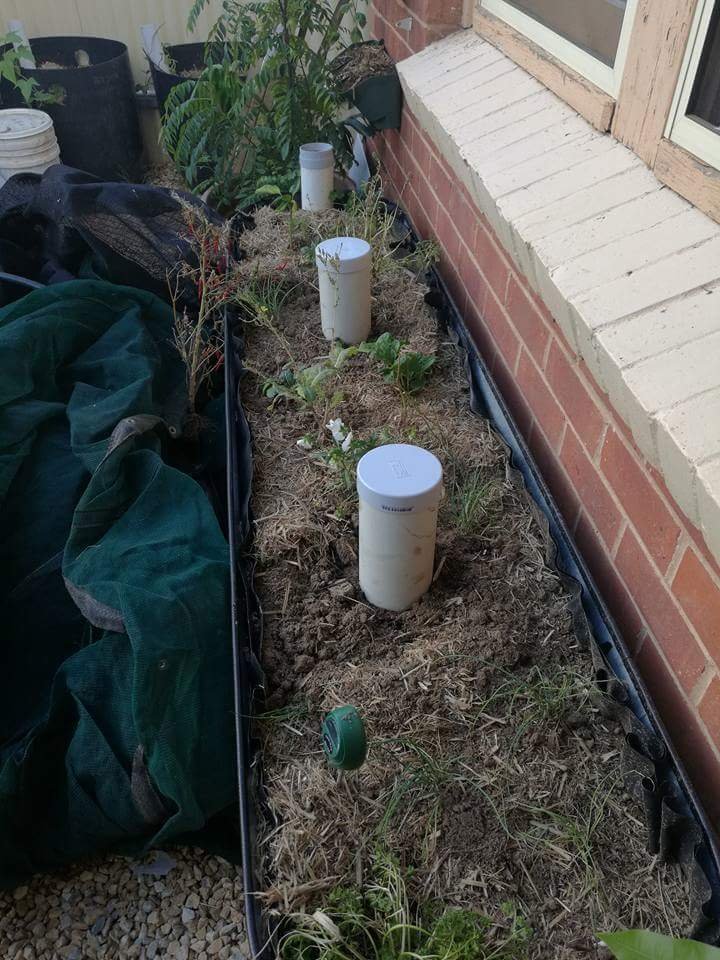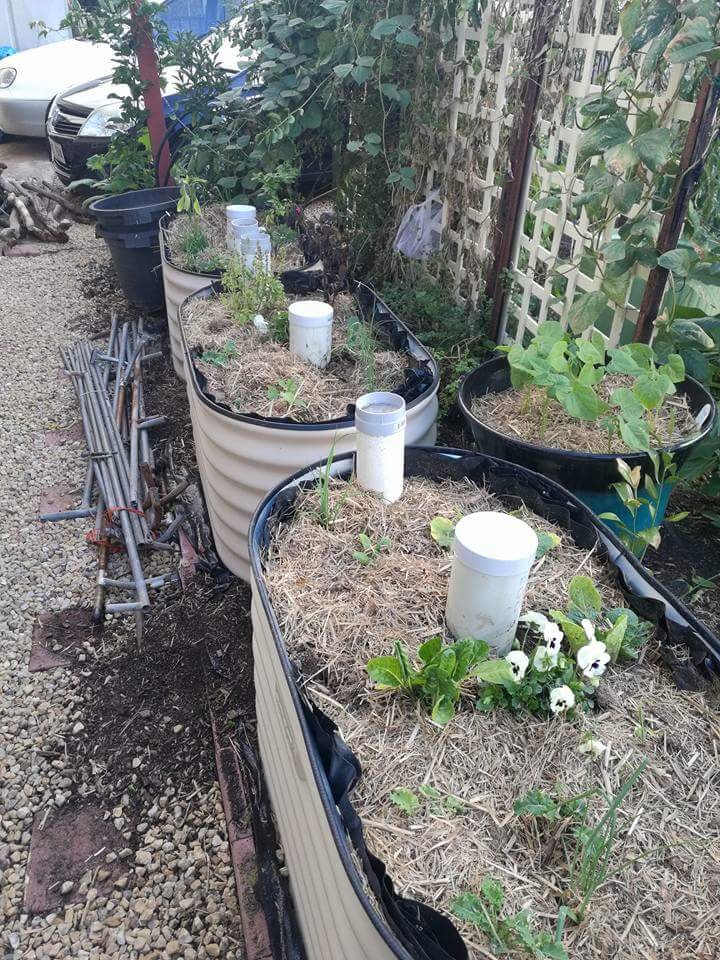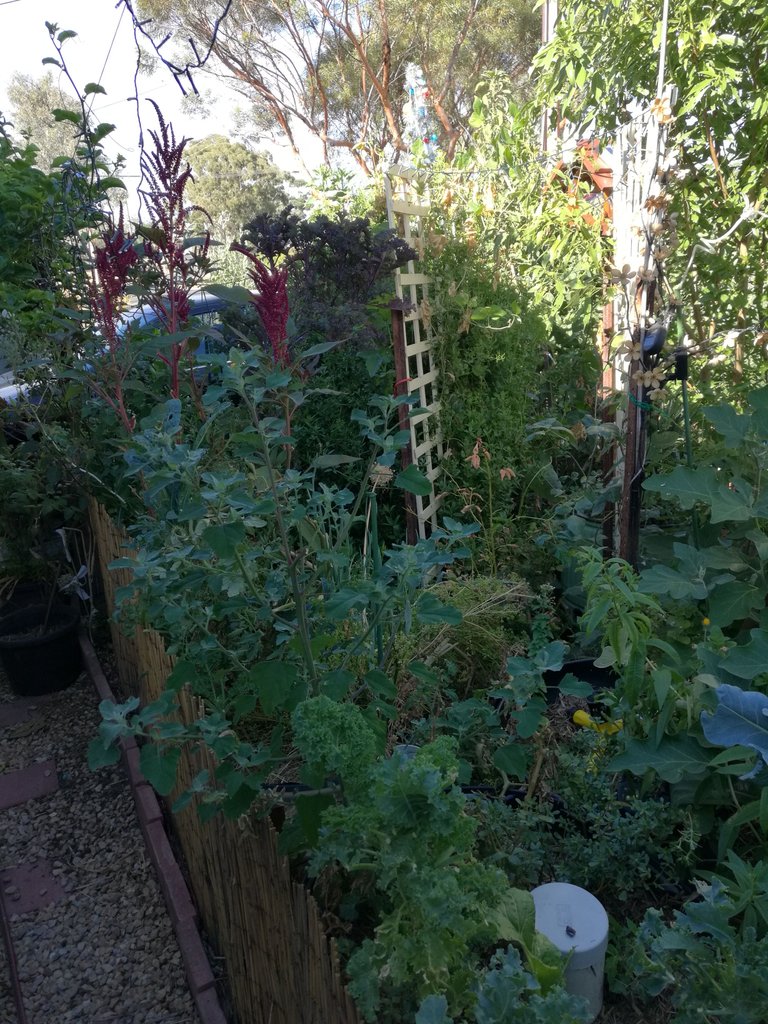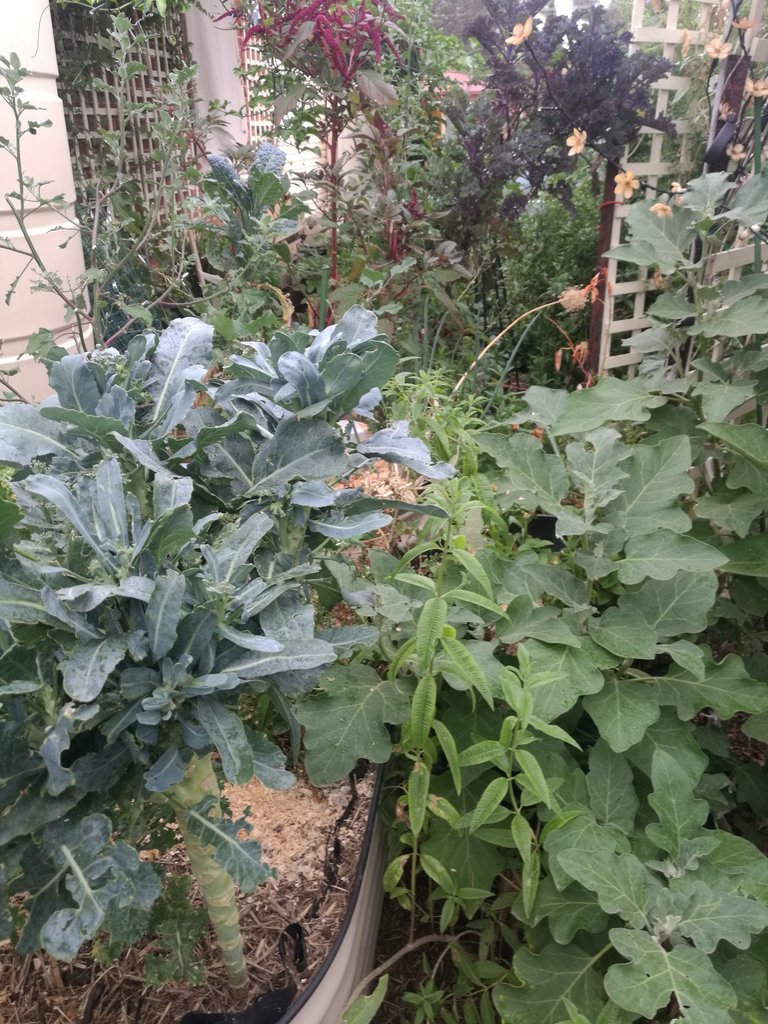

Wicking beds are a great way to grow intensively in a small space, with a minimum of water.
The first two pics in this post are of some of our wicking beds just as they were finished and planted. The second two are of the same beds 6 months later in Summer.
A little later (when the Summer weather cools a little bit more) we're going to make a new one, here at Ligaya and I'll be covering the step by step 'how-to' build in a post then.
For the meantime...a wicking bed is a raised bed with a water reservoir at the bottom. Over this is the soil or other growing medium that the plants live in. You water directly into the reservoir (usually via a pipe) and the water is drawn upwards by capillary action, evaporation and the action of plants.

A wide range of soil types are suitable and the water reservoir is usually a layer of gravel, with the water being held in the spaces between the stones. The gravel is separated from the soil by a layer of permeable fabric such as shadecloth or protective. This keeps the soil out of the pore spaces in the gravel while allowing water to wick upwards.
There is usually an overflow outlet just above the top of the gravel to stop too much water building up when filling or when it rains.
A layer of mulch is recommended, at least for the dry weather. This stops some evaporation as well as keeping the bed cool. Overheating is the one flaw involved with wicking beds made of metal. It's best to shade the side of the beds or, at least, plant some plants that hang over the sides.
Our beds include an additional pipe going about 10 cm (4") into the soil. This pipe we fill with compost and worms so that they can add extra nutrients to the bed. The worms live in the compost in the pipes and move out into the soil a little to do their wormy business.

Wicking beds are a simple,easy to make solution to watering and overwatering. If you're careful not to overkill them, there is no run off, there is little loss to evaporation and an adequate supply of water stays just where the plants need it. Even over the heat of this Summer (lots of days above 40°C and hot northerly winds), we only needed to water about every 8 days with a little 'refresher' water directly to the plants to cool them down and pick them up when they looked a bit frazzled.

This is #originalwork. The pics were taken by yours truly.
Check out how our garden grows on our blog, Ligaya.
We have a YouTube channel and a Patreon page that you might like to visit.
We're also members of the Homesteadersonline community. Click the image for the invite link to join us


Wow youre wicking beds are awesome! Your yield is going to be so rad. Worms :3 what would you recommend for soil proportions if i wanted to grow these year round in an greenhouse with lettuce kale and whatnot. Keep in mind its -10 where i am right now and is cold 5 months of the year (vernon bc) i really love what you guys have setup if you arent able to recommend a soil to mulch ratio thats cool. Im sure ill work it out when its all built.
Thanks! We have 600mm high beds and the bottom 150mm is the gravel water reservoir. That ratio seems to work very well.
I don't know how they'd handle freezing temperatures, though there is alot of thermal mass in them so they might survive if the temperature doesn't plummet too much or if they are in greenhouses.
I made ours into small, individual greenhouses last winter by bending some PVC pipe over them and covering that with plastic. They handled things well, but our temps don't get to freezing.
Soil mixes are trial and error. Im very lucky that the mixx from our local garden centre is perfect (but they dont give away their recipe lol). When you experiment, remember that the water must wick from the bottom to near the top , so either too much sand or too much compost will stop that happening. I would say, based on ovbservatuons that guess20% organic material would be the upper limit.
Let me know how you go!
Amazing. Ok im excited for the spring now more than ever! Thank you!
Just found you! Upvotes and followed.
Great post and I would love to see another post that goes deeper in the "how to build" one of these. I haven't seen a really good explanation for wicking beds yet.
Thanks again!!!
I too am curious to know just how they are built!
Thats coming, once our weathe cools down a bit and before our winter hits
Very cool ligaya, definitely going to be adding this technique to our repertoire soon!
Its fantastic in drier areas like ours. Post your results when you do it
Your Post Has Been Featured on @Resteemable!
Feature any Steemit post using resteemit.com!
How It Works:
1. Take Any Steemit URL
2. Erase
https://3. Type
reGet Featured Instantly � Featured Posts are voted every 2.4hrs
Join the Curation Team Here | Vote Resteemable for Witness